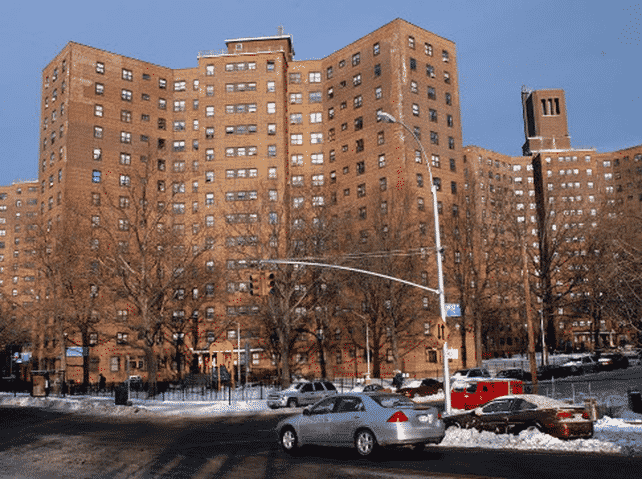In the Soundview section of the Bronx, there is a public housing project along the Bronx River called the Bronx River Houses. It consists of nine 14-story residential buildings, containing 1,247 apartments and approximately 3,025 people.
The Bronx River Houses were constructed in 1951. At this time, several housing developments were built to temporarily shelter working-class families in response to the Great Depression’s devastating impacts. However, like many areas of the Bronx, the South Bronx experienced a major racial demographic transformation over the next 30 years, fueled by racist federal housing policy; this is also known as the white flight.
The increase of rent-controlled apartments is what mainly led to the influx of Black and Hispanic residents. The change in the racial make-up is not how residents of the community remembered it, though. For instance, Brian Werner recalls it for the segregation within neighborhoods and, more notably, the growth of crime and drug use. This rise included an increase in reported assaults in the borough from 998 in 1960 to 4256 in 1969.
Many white residents fled the neighborhood to the suburbs, seeing the South Bronx as a lost cause as a direct result of minorities moving in. Although culture clashes played a role in the deterioration of the neighborhood, the core of the problem was people coping with the dire economic circumstances they were facing. To this day, the Bronx River Houses suffer similar issues today, being one of the most dangerous housing projects in the Bronx.
But the Bronx River Houses is more than just a story of decline; they are also at the heart of hip-hop, a revolutionary music genre to culture. Born in 1944 and a graduate of James Monroe High School, Judy Craig was the lead singer of The Chiffons. Their song, “He’s So Fine,” rose to No. 1 in 1963. She left the group in 1969, but when her fellow member Barbara Lee died, she rejoined. She commented that singers are better treated than before, making it easier for her to enjoy.
Afrika Bambaataa (formerly known as Lance Taylor) also grew up in the Bronx River Houses. He was born in 1957 to Caribbean immigrants. During his childhood, he was exposed to black liberation movements, the rough situations of his surroundings, and his mother’s electro-music taste. These factors laid the foundation for his work, which developed in his very own Bronx River Community Center. A unique product of his creation is The Universal Zulu nation (currently called the Bronx River Organization), “an international hip-hop awareness group.” Beyond an expression of musical innovation, it is a movement of Afrocentrism. The stigma attached to living in the projects, as well as the reality of limited resources and gangs, made Bambaataa’s music an outlet of positivity.
Despite his impact in the music world and Bronx culture, it is essential to note that there were numerous sexual assault allegations against him. Many stories revolved around him taking advantage of young boys who were in dysfunctional homes. He denies this, but charges could not be pressed anyways due to the statute of limitations. He was nevertheless removed as a Universal Zulu nation leader, and the organization released an apology to the victims.
Hassan “Poppy” Campbell is a Youtuber from the Bronx River Houses and a victim of Bambaata. He uses his platform to advocate for social issues and discuss life topics. In one video, Campbell describes how his neighborhood is becoming a victim of gentrification. He touches on the harmful socioeconomic circumstances that led to this; he then shows his viewers the construction going on in various parts of the area to embody the issue. He vouches for the protection and maintenance of the houses but stresses that the people within it must fight and take care of it.
Campbell also criticizes the mantra of “I’m from Bronx River Projects” as an excuse to feel superior to others, particularly those in other housing projects. Although he was making a real point on how people should view each other, he implies a strong truth about the Bronx River Houses: it is a place of pride. The Bronx River Houses are exemplary of what it means to be a Bronx resident. On one hand, they have undoubtedly been afflicted by divestment, urban decay and its socioeconomic effects. But on the other hand, they are a story of using negativity as fuel to shake the world.





